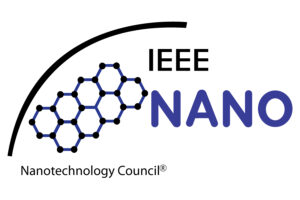
SDC – 1 Title: NanoMAG Logic Challenge: Unveiling the Power of Spintronic Transistors
Introduction
Spintronic transistors have emerged as potential replacements for conventional CMOS transistors due to their faster switching speeds and lower energy consumption. In this competition, students will design and simulate novel spintronic transistor architectures for logic gate implementation. Hybrid Spintronics and Straintronics methods are encouraged. There are two reasons why magnets may replace transistors in digital logic systems:
- the elimination of the I2R dissipation (in principle, no current flow should be needed to switch a magnet),
- the collective interaction between spins which makes the minimum energy dissipation in a magnet much less than that in a transistor when both contain the same number of information carriers (electron charges or electron spins). Magnets also suffer from no “leakage” unlike transistors, which increases their energy efficiency even more.
There are two sources of energy dissipation in switching nanomagnets: (1) the internal energy dissipated when the magnetization flips (its minimum value is kT ln ln (1/p) (1/p) but the actual value may be somewhat higher); (2) the energy dissipated in the switching circuitry, which depends on the method of switching.
Design Specifications and Rules
- The design goal is to create a robust and energy-efficient spintronic transistor capable of implementing basic logic gates (i.e., AND, OR, NOT).
- Students can explore different mechanisms like but not limited to spin torque transfer, spin-orbit coupling, and magnetic proximity effects to implement their transistor functionalities.
- Simulations should include detailed modeling of spin transport, magnetic dynamics, and device characteristics (e.g., current-voltage curves, switching times).
- Winning criteria will be based on a combination of logic gate functionality, switching speed, energy efficiency, and scalability of the proposed design.
Bonus Points
- Energy consumption per switching event.
- Scalability of the design to integrate multiple transistors into complex logic circuits.
- Majority Logic Gate Implementation
Measurable Parameters
(Designs to meet many of the following)
- Switching time Δt ~ 1 ns to 2 ns
- Energy dissipated to flip a bit per clock cycle at 1 ns is 1.7 pJ = 4 × 108kT at room temperature, assuming the resistance of the loop to be 10 ohms.
- error probability p = 1 -exp (-t) , where is the spin flip rate and t is the time interval.
- spin flip rate 1/T1 = A + B pextrinsic’ where A and B are constants and pextrinsic’ is the extrinsic error probability.
- Extrinsic error probability pextrinsic=ptotal–pintrinsic’ where ptotal is the total error probability and pintrinsic’ is the intrinsic error probability; pextrinsic should be smaller at any given temperature.
- array of single-domain nanomagnets each consisting of roughly 104 spins.
The minimum energy barrier separating the two stable states in a shape-anisotropic single-domain nanomagnet is related to the degree of shape anisotropy and is given by the equation.
![]()
where μ0 is the permeability of free space, Ms is the saturation magnetization of the magnet per unit volume (∼5 × 105 A/m for common materials like nickel and cobalt), Ω is the nanomagnet’s volume, and Nd-yy’ Nd-zz are the demagnetization factors along the y- and z-axes, respectively.


